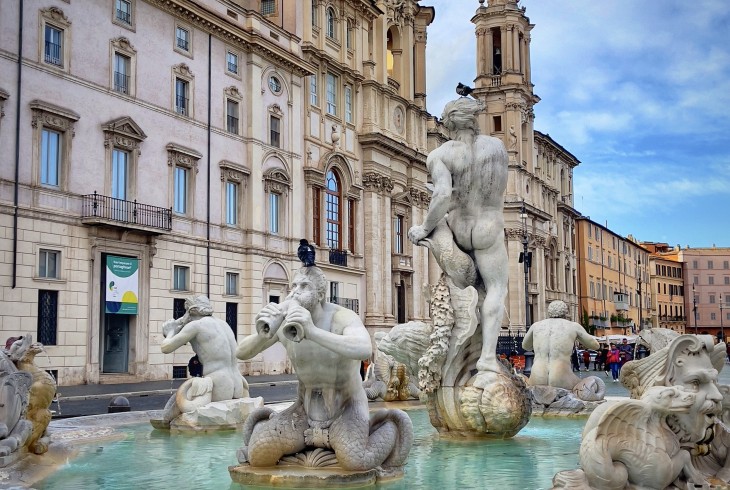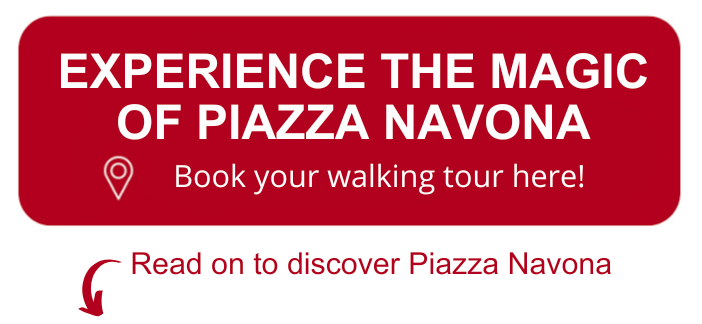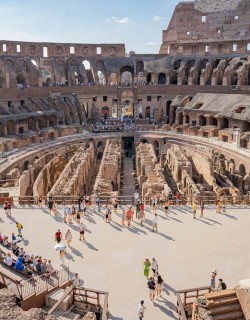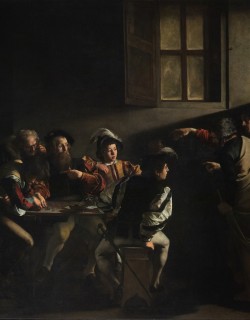In Rome's pantheon of spectacular squares, Piazza Navona sits right at the top of the pile. An ancient racetrack transformed into the Eternal City's most important public space, this spectacular piazza boasts marvellous fountains, churches and sculptures coexisting in a dramatic ensemble that perfectly encapsulates everything that makes visiting Rome such a special experience. This is the place to see and be seen in the Eternal City.
After months of painstaking restorations, the square has been returned to its original glory just in time for the Jubilee year of 2025. Decades of pollution have been lovingly cleaned away, and the piazza’s extraordinary Baroque fountains are gleaming again as if they had just been carved. To celebrate, this week on our blog we’re profiling the square’s landmarks: from rushing fountains to lovely churches and hidden ancient ruins, these are the top things you need to see in Piazza Navona.
Four Rivers Fountain
Dominating the very center of Piazza Navona, the barnstorming Fountain of the Four Rivers stands alongside the Trevi as Rome’s finest fountain. Commissioned by the Pamphilj Pope Innocent X as part of a sweeping transformation of the piazza into one grandiose monument to his powerful family, the fountain was designed by Baroque master Gianlorenzo Bernini.
Despite his status as Italy’s most sought-after artist at the time, Bernini had been previously snubbed for commissions by the Pamhilj family due to his relationship with the Barberini. Taking the opportunity with both hands, Bernini wowed the world with an extraordinary sculptural ensemble featuring personifications of the known continents’ most important rivers holding up an Egyptian obelisk: the Danube, the Nile, the River Plate and the Ganges.
The massive figures seem to defy gravity as they float above the waters of the fountain, a perfect example of Bernini’s unique ability to astonish the viewer with virtuoso feats of artistic trickery. To read about the Fountain of the Four Rivers in more detail, check out our dedicated article here: Bernini’s Four Rivers Fountain in Piazza Navona.
Sant’Agnese in Agone
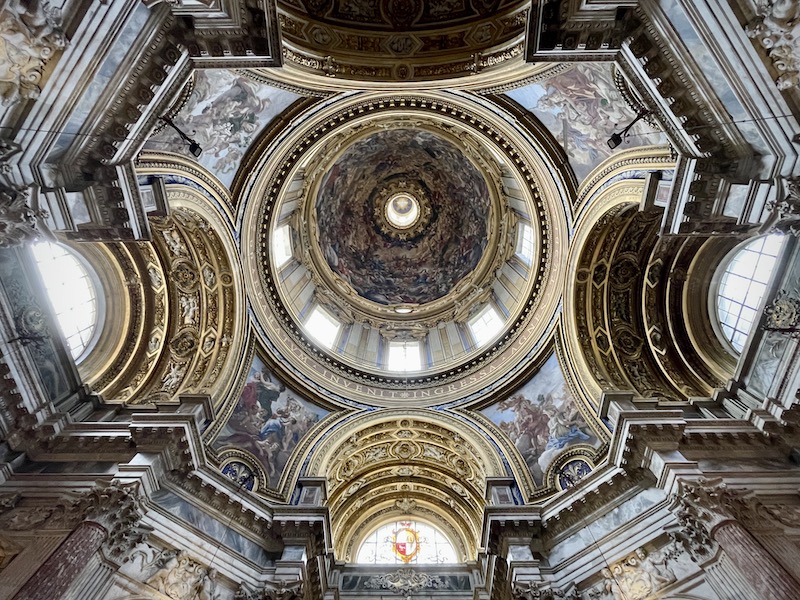
An excellent example of the architect Francesco Borromini’s unique style, the curvaceous, wildly undulating facade of Sant’Agnese in Agone is one of Rome’s most dramatic. The church marks the legendary site of the saint’s martyrdom, but contrary to a widespread misconception online “in agone” doesn’t allude to Agnes’ agony; instead it means “at the site of the competitions” and refers to the piazza’s ancient origins as the location of Domitian’s racetrack.
Originally intended as a chapel for the Pamphilj family, whose palace adjoins it, the church was begun by Girolamo Rainaldi and his son Carlo in 1652, before being replaced by Borromini a year later. The sensational interior takes the form of a symmetrical Greek cross, topped by a fine dome featuring a fresco of the Apotheosis of Saint Agnes by Ciro Ferri.
Fountain of the Moor

Situated at the southern end of Piazza Navona, the Fontana del Moro was begun in 1575, when Pope Gregory XIII had Giacomo della Porta design the fountain decorated with sculptures of tritons, dragons and theatrical masks. In the middle of the next century the Pamphilj pope Innocent X entrusted Gianlorenzo Bernini with redesigning the fountain - Bernini's vision of two dolphins supporting a snail wasn't well received, and he quickly had it replaced with the maritime figure we see today gripping a dolphin's tail.
Despite the fountain's title, it seems that the identification of the figure with a Moor is a much later accretion; it isn’t certain that Bernini originally meant to represent a North African here at all, and the figure was referred to as Triton or Neptune in contemporary sources.
The Stadium of Domitian
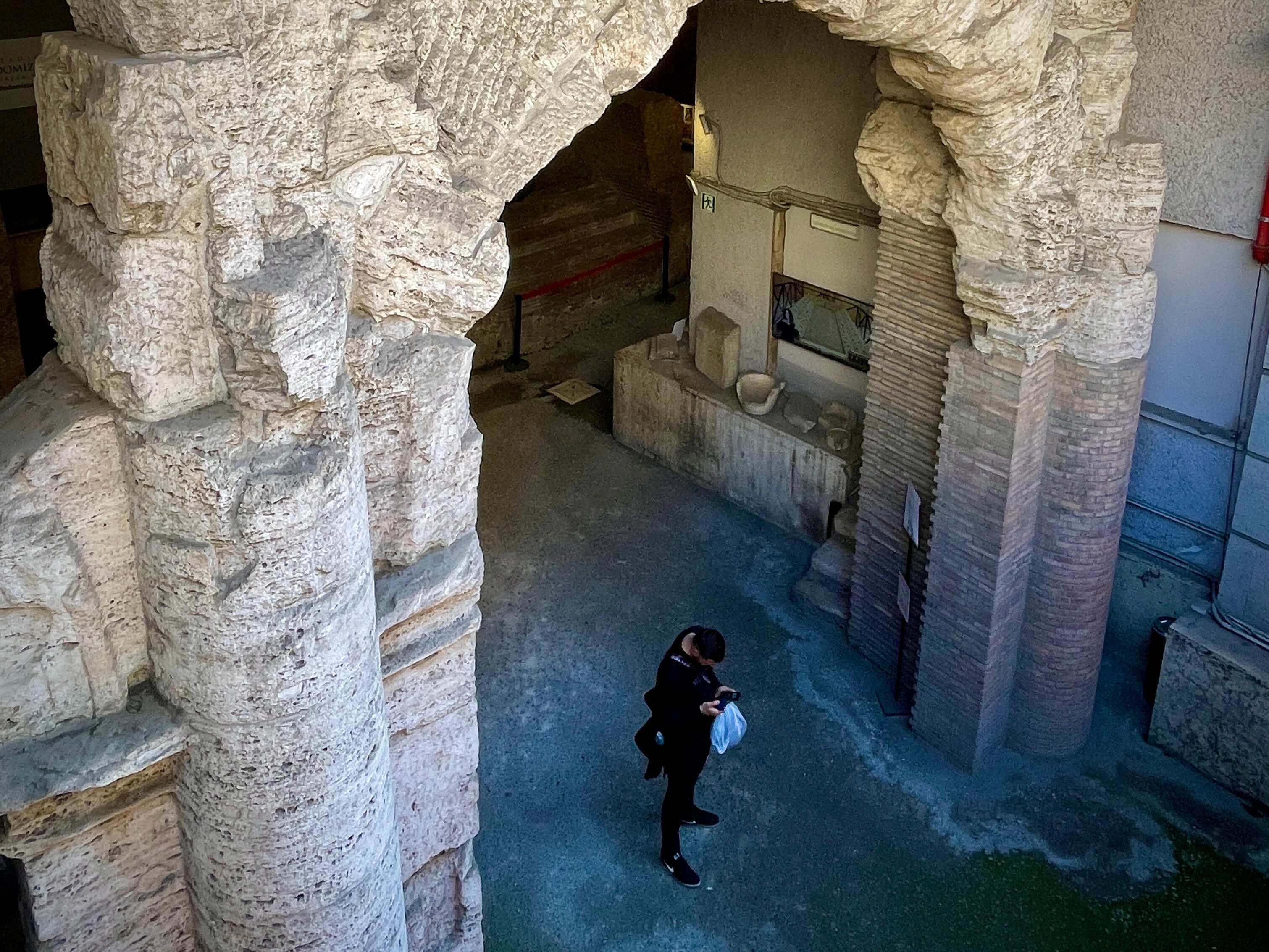
Piazza Navona owes its distinctive elliptical shape to its original function in antiquity as a racetrack – for foot races rather than chariot races – known as the Stadium of Domitian. Domitian was the final emperor in the Flavian dynasty, succeeding Vespasian and Titus, who were responsible for the construction of the Colosseum across town.
Domitian was a prolific builder, and transformed the city with dozens of large-scale infrastructural projects during his reign including this athletics venue which was completed around 86 AD. It’s estimated that the stadium could accommodate up to 30,000 people. “Stadion” was a unit of measurement in antiquity, corresponding to around 180 meters, and refers to the standard length of races.
Although it’s impossible to get a sense of the impressive scale and architectural refinement of the long-disappeared structure, you can visit the ancient remains of the stadium’s seating area located about 15 feet below the surface of the modern piazza, which have been extensively excavated since the 1930s.
Fountain of Neptune
It might be less famous than the two Bernini-designed fountains that stud Piazza Navona, but the Fountain of Neptune at the northern end of the square loses nothing in dramatic force compared to its more renowned neighbors. Here, in a dynamic display of mythological derring-do, the god of the sea wrestles fiercely with a formidable sea monster, his muscular form commanding attention amidst the swirling chaos.
Designed originally in 1574 by Giacomo della Porta, this basin was initially a simple drinking fountain, a far cry from the theatrical spectacle that greets us today. It wasn’t until the 1870s that sculptors Antonio della Bitta and Gregorio Zappalà brought the fountain to life with its vivid ensemble. Neptune, sculpted by della Bitta, takes center stage, locked in combat with a giant octopus. Surrounding him, Zappalà added striking touches: a sea nymph arches her back, her expression a mix of terror and awe, while a rearing horse churns the water with frenzied hooves.
Though less renowned than the piazza’s central Fountain of the Four Rivers or the southern Fountain of the Moor, the Fountain of Neptune is a masterpiece in its own right. Against the backdrop of Francesco Borromini’s graceful Church of Sant’Agnese in Agone, it offers a scene that is both dramatic and steeped in history—an unmissable stop for any visitor exploring this lively Roman square.
Pamphilj Palace
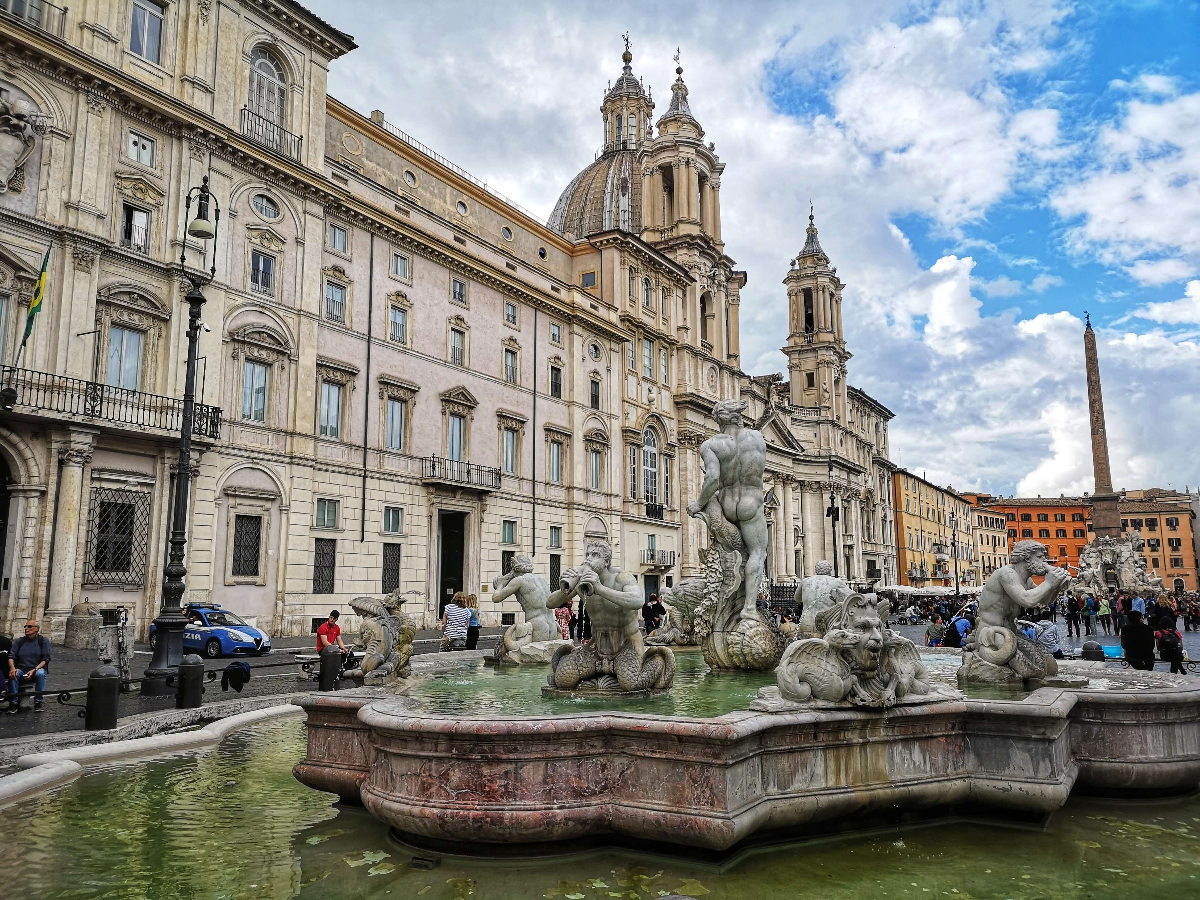
No story of Piazza Navona can be told without reckoning with the Pamphilj family, whose rise to the highest echelons of Roman society in the 17th century culminated with the election of Giovanni Battista Pamphilj as Pope Innocent X in 1644. The Pamphilj decided to center their urban patronage on Piazza Navona and its surroundings, initiating the construction of a grandiose family palace here to designs by the architect Girolamo Rainaldi.
Although Giovanni Battista moved into the Vatican on his ascension to the chair of St. Peter, Piazza Navona remained at the very epicenter of Roman political and social life thanks to the residence in the palace of the pope’s formidable sister-in-law and confidante Olimpia Maidalchini.
Sacro Cuore Church
Almost entirely overshadowed by the bombastic Baroque drama of Sant’Agnese in Agone across the square, not many visitors venture into the church of Sacro Cuore that faces it across Piazza Navona. The fact that it’s practically hiding in plain sight makes it an ideal spot to escape the crowds when the bustle of the square gets too much, however. Stop off here to be enveloped in almost total tranquility in the gloomy but interesting interior.
Built on the site of an earlier house of worship that was devoted to serving the city’s Spanish community, the church lost many of its most precious artworks when the Spanish national church was relocated to Santa Maria in Monserrato degli Spagnoli in the 17th century. Some interesting artefacts remain, however, including a beautiful Renaissance statue depicting St. James by Jacopo Sansovino as well as dynamic 16th-century frescoes by Pellegrino Artusi, a pupil of Raphael.
For 25 years, Through Eternity have been organizing itineraries showcasing the best of Rome led by our resident expert guides. If you're planning a visit to the Eternal City this year, be sure to get in touch to help plan your perfect trip!
MORE GREAT CONTENT FROM THE BLOG:
- Everything you Need to Know About Visiting Rome
- Baroque Visions: Caravaggio, Bernini and Borromini
- 6 Most Ancient Churches in Rome
- How to visit the Colosseum in 2024: Tickets, Hours, and More
- 7 Things you Need to Know About the Trevi Fountain
- Visiting the Vatican Museums and St. Peter's Basilica: The Complete Guide
- 9 Things You Need to Know About the Pantheon in Rome
- 5 Reasons to Explore Italy with Through Eternity
- The Best Catacombs to Visit in Rome
